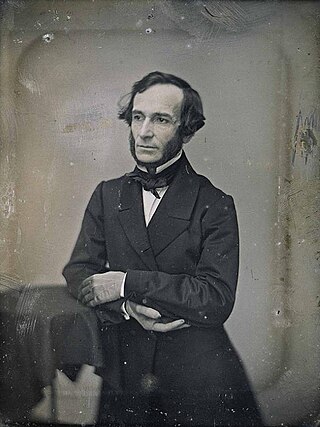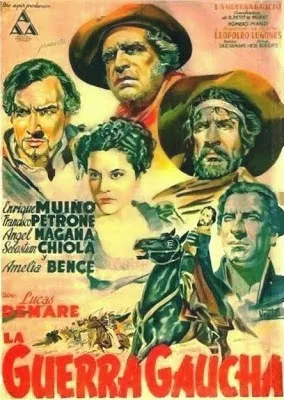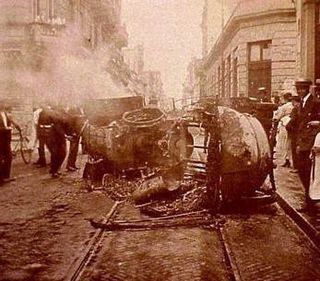Related Research Articles

Juan Bautista Alberdi was an Argentine political theorist and diplomat. Although he lived most of his life in exile in Montevideo, Uruguay and in Chile, he influenced the content of the Constitution of Argentina of 1853.
The Argentine Libertarian Federation is a libertarian communist federation which operates in Argentina, out of the City of Buenos Aires, San Pedro, La Pampa Province, and Rosario. Founded in October 1935 with the name of the Anarcho-Communist Federation of Argentina the FLA adopted its current name in 1955. It is governed by the Declaration of Principles and the Organic Charter approved by its congress. Its structure and operation are federative and are coordinated by Local Councils and the National Council.
Martín Fierro was an Argentine magazine published between 1904 and 1905, founded to propagate anarchist ideas. It was named after José Hernández's epic poem Martín Fierro, a touchstone of Argentine national identity, whose title character is a renegade gaucho.

The Gaucho War is a 1942 Argentine historical drama and epic film directed by Lucas Demare and starring Enrique Muiño, Francisco Petrone, Ángel Magaña, and Amelia Bence. The film's script, written by Homero Manzi and Ulyses Petit de Murat, is based on the novel by Leopoldo Lugones published in 1905. The film premiered in Buenos Aires on November 20, 1942 and is considered by critics of Argentine cinema to be one of the most successful films in history. It won three Silver Condor awards, including Best Film, Best Director, and Best Adapted Screenplay, given by the Argentine Film Critics Association at the 1943 Argentine Film Critics Association Awards for the best films and performances of the previous year.

The Argentine anarchist movement was the strongest such movement in South America. It was strongest between 1890 and the start of a series of military governments in 1930. During this period, it was dominated by anarchist communists and anarcho-syndicalists. The movement's theories were a hybrid of European anarchist thought and local elements, just as it consisted demographically of both European immigrant workers and native Argentines.

Uruguayan Anarchist Federation is a Uruguayan anarchist organization founded in 1956. The FAU was created by anarchist militants to be a specifically anarchist organization. The FAU was the first organization to promote the organizational concept of Especifismo.
Expropriative anarchism is the name given to a practice carried out by certain anarchist affinity groups in Argentina and Spain which involved theft, robbery, scams and counterfeiting currency. The robberies done were called "expropriations on the bourgeoisie". It had its major peak between 1920 and 1935 and some of its most famous practitioners were Buenaventura Durruti, Francisco Ascaso, Severino Di Giovanni, Miguel Arcángel Roscigna, and Lucio Urtubia. It was different from French illegalism because it was not thought of as a way of life but as a way of reaching political ends such as financing revolutionary activities, anarchist propaganda and the release of anarchist prisoners.
Anarchism in Ecuador appeared at the end of the 19th century. At the beginning of the 20th century it started to gain influence in sectors of organized workers and intellectuals.

Virginia Bolten (1870–1960) was an Argentine journalist and anarchist feminist activist. An anarchist agitator from an early age, she became a leading figure among the working women of Rosario, organising for the Argentine Regional Workers' Federation (FORA) and leading the first women's strike in the country's history. After being recruited into the anarchist movement in Buenos Aires by the Italian anarchist Pietro Gori, she joined some of the country's first anarchist women's organisations and established one of the world's first anarchist feminist periodicals: La Voz de la Mujer.

Tragic Week, also known as Bloody Week, was a series of riots and massacres that took place in Buenos Aires, Argentina, from January 7 to 14, 1919. The uprising was led by anarchists and communists and was eventually crushed by the Argentine Federal Police, the military, and the Argentine Patriotic League. Estimates of the death toll vary but are usually in the hundreds, mostly of workers at the hands of the government forces.
Events in the year 1879 in Argentina.

Herminia Catalina Brumana was an Argentine teacher, writer, journalist, playwright and feminist activist with socialist and anarchist ideas. She wrote nine books and eleven plays, three of them published. She wrote for Mundo Argentino, El Hogar and La Nación, among other periodicals. She actively participated as an anarchist and socialist. She was considered a disciple of Rafael Barrett.
Anarchism in Bolivia has a relatively short but rich history, spanning over a hundred years, primarily linked to syndicalism, the peasantry, and various social movements. Its heyday was during the 20th century's first decades, between 1910 and 1930, but a number of contemporary movements still exist.
Anarchism in Venezuela has historically played a fringe role in the country's politics, being consistently smaller and less influential than equivalent movements in much of the rest of South America. It has, however, had a certain impact on the country's cultural and political evolution.
Rosa Chanovsky, better known as Rosa Dubovsky was a Russian-born feminist activist and militant anarchist in Argentina. She is remembered for her involvement with the Argentine Regional Workers' Federation (FORA), and for founding the Emma Goldman Library.

The anarchist movement in Chile emerged from European immigrants, followers of Mikhail Bakunin affiliated with the International Workingmen's Association, who contacted Manuel Chinchilla, a Spaniard living in Iquique. Their influence could be perceived at first within the labour unions of typographers, painters, builders and sailors. During the first decades of the 20th century, anarchism had a significant influence on the labour movement and intellectual circles of Chile. Some of the most prominent Chilean anarchists were: the poet Carlos Pezoa Véliz, the professor Dr Juan Gandulfo, the syndicalist workers Luis Olea, Magno Espinoza, Alejandro Escobar y Carballo, Ángela Muñoz Arancibia, Juan Chamorro, Armando Triviño and Ernesto Miranda, the teacher Flora Sanhueza, and the writers José Domingo Gómez Rojas, Fernando Santiván, José Santos González Vera and Manuel Rojas. At the moment, anarchist groups are experiencing a comeback in Chile through various student collectives, affinity groups, community and cultural centres, and squatting.
Resistencia Libertaria was an Argentine anarchist urban guerrilla group that emerged in 1974 via a network of workers and university militants from La Plata y Córdoba. The group worked during the last military dictatorship in Argentina and was the only anarchist guerrilla group during the period of state terrorism in the 1970s. At least eight members of the organization were kidnapped and went missing during the dictatorship.
Mario David was an Argentine film director and screenwriter. He directed and wrote 12 films between 1971 and 1996.
Anarchism in Paraguay has held influence among the urban and rural working classes since the end of the 19th century. Its main figure was the writer and journalist Rafael Barrett.
The Sociedad Cosmopolita de Resistencia y Colocación de Obreros Panaderos was a trade union for bakers in Argentina. It was founded in 1887 by Italian anarchist labor organizer Ettore Mattei.
References
- ↑ Suriano, Juan (2008). Anarquistas: cultura y política libertaria en Buenos Aires, 1890-1910. Buenos Aires: Manantial. p. 186. ISBN 978-987-500-069-8.
- 1 2 Domínguez Rubio, Lucas Manuel (2018). El anarquismo argentino: Bibliografía, hemerografía y guías de fondo de archivo. Anarres. ISBN 978-987-1523-30-6.
- ↑ Rovira, Gonzalo Zaragoza (1996). Anarquismo argentino, 1876-1902 (in Spanish). Ediciones de la Torre. p. 81. ISBN 978-84-7960-157-7.
- ↑ Moroziuk, Lidia (2007). "Inmigración e ideología anarquista. Protesta agitativa contrainstitucional y gráfica contestataria (1879 – 1940)" (PDF). VII Jornadas de Sociología, Facultad de Ciencias Sociales, Universidad de Buenos Aires, Buenos Aires.